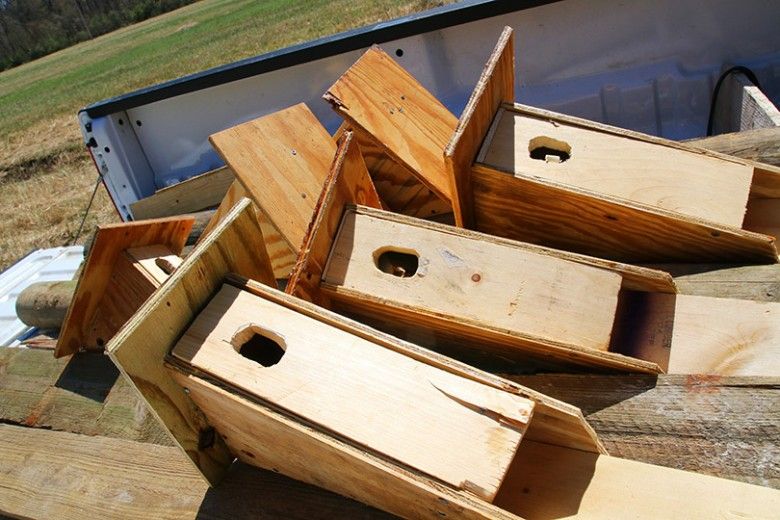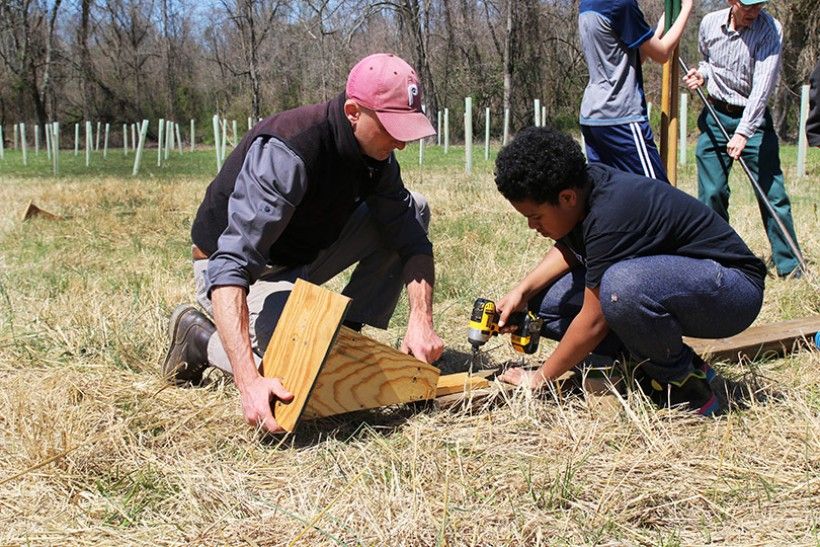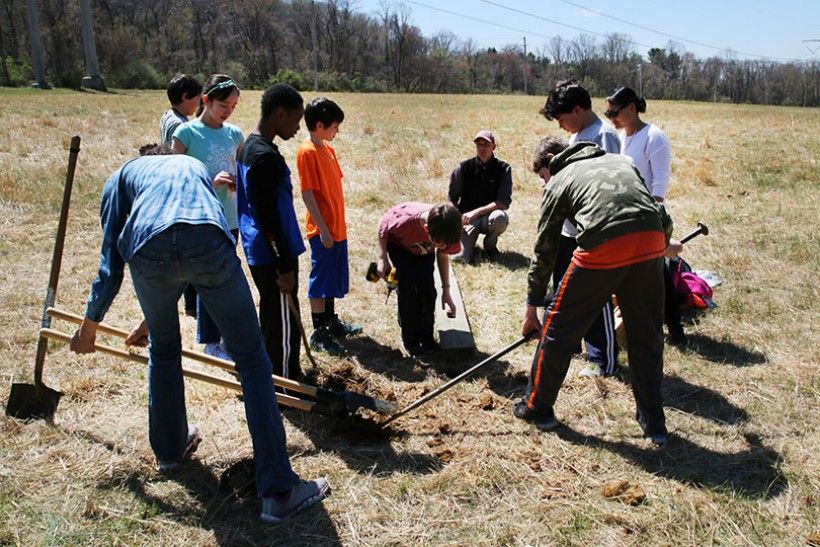Making Homes Where the Conservancy Began

The middle school students at Stratford Friends School are familiar visitors to the Brandywine Conservancy’s Waterloo Mills Preserve. Every year, these lucky students visit the Preserve to further the lessons they are learning in the classroom, in the outdoors.
Discovering the Secret Lives of Birds
On their fall visit, the students take a guided bird walk with Natural Resource Manager Kevin Fryberger. They learn to identify, by both sight and sound, the most common of our feathered friends. After the walk, the students get a close-up look at bird life, by viewing the inside of bird nesting boxes and discovering which kind of bird built the nest inside. Over the winter months, the students build bluebird nest boxes of their own at the school’s workshop. Then, in the spring, they return to Waterloo Mills to assist Kevin in installing the newly constructed boxes, just in time for the start of breeding season for eastern bluebirds. This experiential approach to learning provides opportunities for students to utilize a number of skills from science to math, teaches communication and cooperation skills, and even provides technical skills training through nest box construction. In addition, by learning to observe and appreciate our local wildlife, the students are developing an appreciation and respect for the natural world. Creating installing these boxes is teaching them to be excellent stewards of land and wildlife.

Where it All Began
The students have built so many boxes over the last several years that we have run out of room for them at the Waterloo Mills Preserve! So this year, the students visited the Conservancy’s campus in Chadds Ford to install their bluebird boxes in a meadow. This is a special site, as the meadow was the first property ever preserved by the Conservancy in 1967. The boxes were installed close to a trail that will soon be open to the public, allowing hikers and bird watchers to view the many bluebirds that we are sure will take up residence in their new homes.

Make a Big Impact in the Survival of Local Birds
Many species of birds local to our region experience a lack of suitable nesting sites, due to the loss of woodlands. Those that nest in cavities, usually holes in dead trees, will find a handmade wooden nesting box to be perfect accommodation. By providing suitable places to raise their young, we are helping to ensure that local bird populations remain healthy.
Making nest boxes is easy and a great project for families that will benefit our resident wildlife. Open areas like fields or lawns are attractive to bluebirds, making them a great target species for backyard nest boxes. For instructions on how to build a bluebird box, see this website: http://www.nabluebirdsociety.org/nestboxes/nestboxplans.htm
And to learn more about nest boxes and read troubleshooting tips, see here: http://nestwatch.org/learn/all-about-birdhouses/